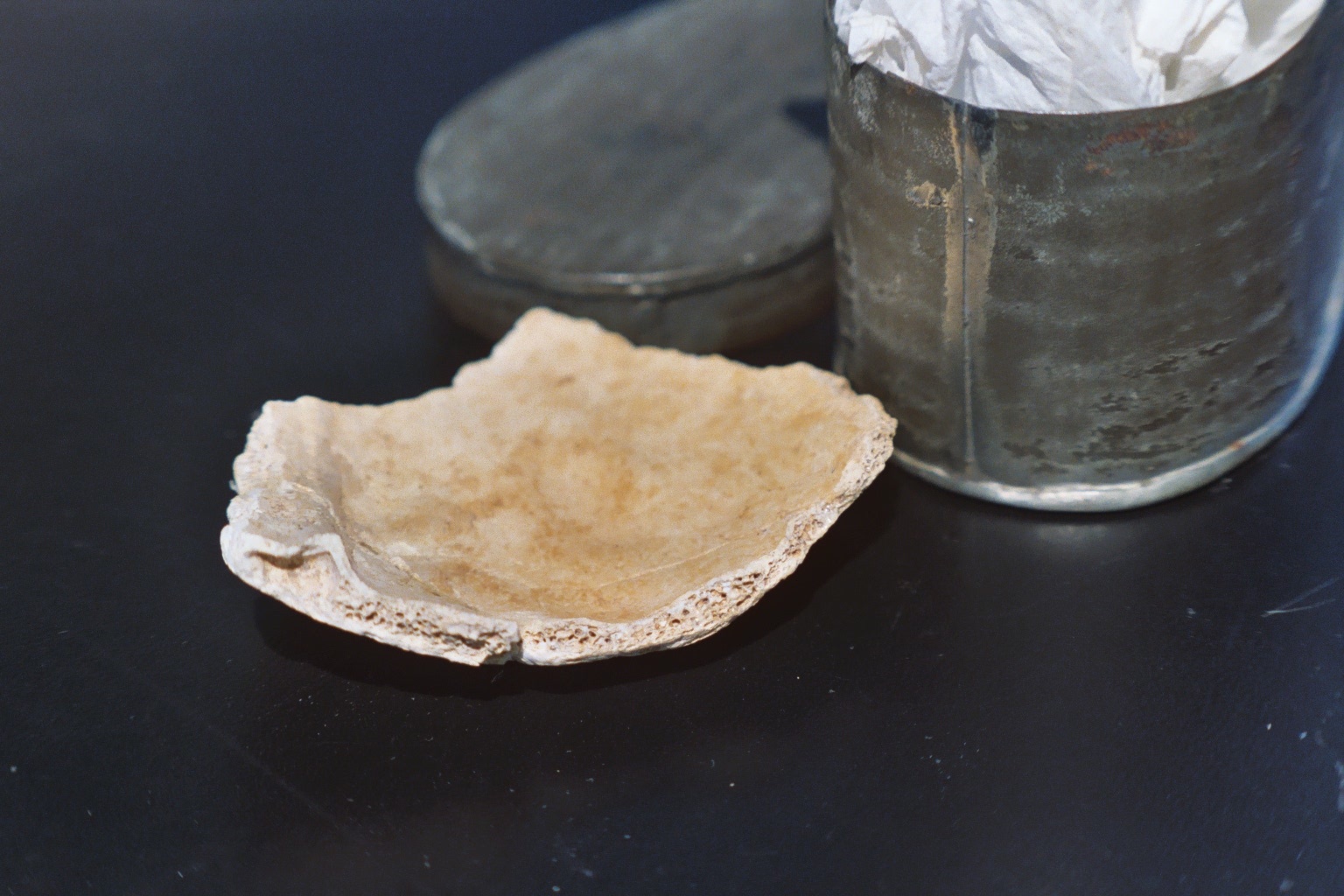William Meredith
On Thursday, July 20, 2023, California businessman Paul Kaufmann donated the two large and remaining very small Romeo Seligmann skull fragments to the collections of the Josephinum in Vienna. These fragments are the subject of a two-part article I published in 2005 and 2015 (see Selected Essays on this website for the texts). A number of online articles about Mr. Kaufmann’s donation have appeared (see the list below), only one of which has a completely accurate title (Julia Sica’s article in Der Standard). The others state in the titles that they are authentic fragments of Beethoven’s skull or are believed to be authentic; the authenticity has not been proven to date. Giving the contested fragments to the Josephinum is, in my estimation, a very worthy idea, since the bones return to Vienna where Dr. Romeo Seligmann lived and worked (though, depending on whose bones they are, they may be from anywhere in the world since Romeo Seligmann had a large collection of skulls he himself collected and also had skulls sent to him from around the world).
In his consistent approach to supporting research on the fragments, Mr. Kaufmann has generously agreed to have the dna in the two large fragments tested by the same lab that undertook the genome analysis of the five authentic locks of hair. The results are anticipated next March. The dna of the two fragments, which may be from different people, will be compared to the authentic genome found in the five locks. If dna can be successfully extracted from the bones, then the comparison will answer the question of authenticity in 2024, which has been contested since the existence of the fragments was announced and discussed in Hans Bankl and Hans Jesserer’s Die Krankheiten Ludwig van Beethovens: Pathographie seines Lebens und Pathologie seiner Leiden (Vienna: Verlag Wilhelm Maudrich, 1987). (They misidentified the frontal bone as a parietal bone [pp. 106-09]).

One of the major issues in the question of authenticity concerns the location of the frontal bone on the skull. The California osteologists who agreed it was a frontal bone (see the 2015 article) used the location of the posterior margin of the frontal sinus as one factor in their placement of the bone. An alternative placement was suggested last November by Dr. Christian Reiter, who suggested that the frontal bone could be from Beethoven if one placed it above the craniotomy cut. (See his “On the Authenticity of Beethoven’s Skull Fragments from the Estate of Prof. Dr. Romeo Seligmann,” Wiener Medizinische Wochenschrift, November 29, 2022; his proposed placement is in Figure 8). However, his suggestion “places the back end of the sinus VERY far from what is normal in humans” (email of March 29, 2023, from Dr. White). For the anatomy of the frontal sinuses and their normal placement, see: https://www.cancer.gov/publications/dictionaries/cancer-terms/def/frontal-sinus
In fact, quoting this site, “There are two, large frontal sinuses in the frontal bone, which forms the lower part of the forehead and reaches over the eye sockets and eyebrows” (italics mine).
The authenticity of these fragments also concerns the question of whether or not Beethoven suffered from lead poisoning. One of the two Kaufmann fragments was tested for lead in 2010 by Dr. Andrew Todd of the Mount Sinai School of Medicine, who reported that the “tests with x-ray fluorescence had revealed no more lead in that skull than in an average person’s skull.” He concluded, “Beethoven didn’t have long-term high lead exposure, so I think we can stop looking at lead as being a major factor in his life.” The New York Times reporter James Barron wrote both about Dr. Todd’s findings in 2010 and again this past April:
James Barron, “The Mystery of Beethoven’s Skull Remains Unsolved,” The New York Times. Published March 27, updated April 10, 2023.
James Barron, “Beethoven May Not Have Died of Lead Poisoning, After All,” The New York Times. May 28, 2010.
There is important ongoing research on the lead levels in two authenticated locks of hair, but the study is still in the works. Hopefully it will appear in the coming months.
In conclusion:
- the Seligmann fragments are now part of the collection of the Josephinum, Vienna;
- the 1987 mistaken identification of the frontal bone as parietal was corrected by Dr. White and other osteologists in 2015;
- Dr. Reiter has suggested an alternative placement of the frontal bone above the craniotomy cut in 2022 to that suggested by the five California osteologists;
- one of the large fragments was tested for lead by Dr. Andrew Todd in 2010, who found that there was not an excessive amount of lead;
- dna studies of the fragments are ongoing, the results of which are anticipated by March 2024.
Hopefully, enough dna can be extracted to compare the results to the authentic genome published in March 2023 so that the issue of the fragment’s authenticity can be determined.
Web Articles
Julia Sica, “Umstrittene Schädelfragmente aus Beethovens Grab sind weider in Wien,” Der Standard. July 20, 2023. (“Contested Skull Fragments from Beethoven’s Grave Are Once Again in Vienna”)
“Beethoven einziger Schädelknochen als Geschenk an MediUni Wien,” Die Presse, July 20, 2023. (“Beethoven’s Only Skull Bones as Present for the MediUni Wien”)
“Schädelteile Beethovens übergeben,” wien ORF.at. July 21, 2023. (“Parts of Beethoven’s Skull Handed Over”)
Bethany Bell and Laura Gozzi, “Beethoven Skull Fragments Return to Vienna.” BBC News, July 21, 2023.
